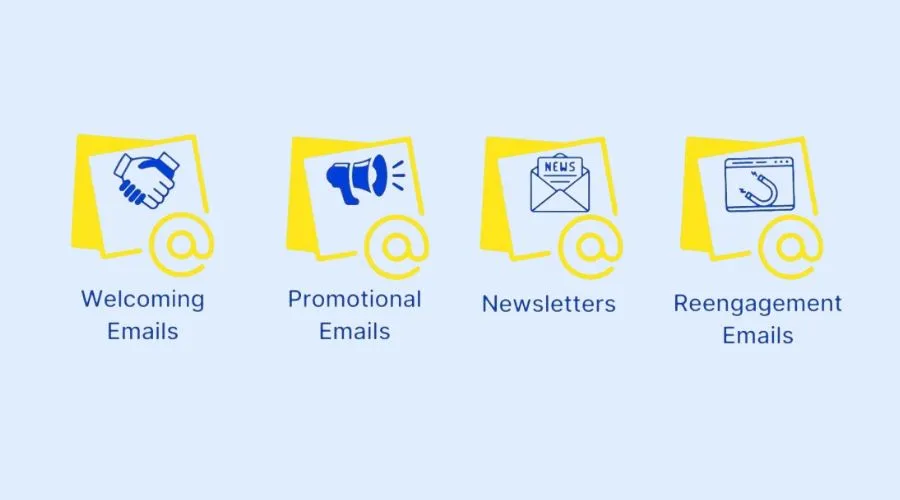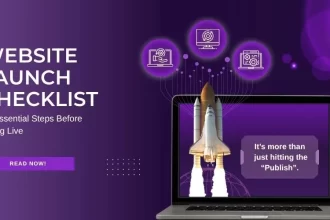What Is E‑Mail Marketing?

E-mail marketing is a digital marketing form that helps send targeted messages to people via email. These people can be customers or prospects. Consider it as a kind of reminder that you are still available, for instance, a polite offer, recommendation, and update.
Why It Works: The Heart of E‑Mail Marketing
- Permission is Power
Your emails are only read by subscribers. This implied approval increases the effectiveness and welcome of your message. - High ROI
Businesses can earn multiples more for every ₹1 spent—the modern equivalent of turning pocket change into gold. - Beyond the Inbox
An email lands straight in someone’s inbox, ready to be acted upon whenever it’s convenient for them, unlike short-lived social media messages.
Types of Email Campaigns: Speak to the Moment

- Promotional Emails
Through promotional emails, you can send flash deals, new product announcements, or event invitations—complete with a clear call to action (CTA). - Newsletters
Send regular updates, stories, and tips. It helps nurture relationships and maintain subscriber engagement. - Retention & Re‑engagement
Tutorials, “We miss you” notes, or welcome emails are excellent for keeping clients and recovering inactive subscribers. - Transactional Emails
Order confirmations, cart abandonment reminders, and password resets are examples of automated processes that are crucial to the user experience.
The Benefits in a Nutshell
- Boosted Conversions
You will get benefits like personalized discounts or reminders, prompt action: “Buy now,” “Read more,” or “Redeem offer.” - Brand Recall
Regular emails keep your brand top-of-mind without bombardment. - Enhanced Loyalty
Over time, trust is developed through a memorable welcome sequence and useful material.
How It Works: From List to Loyalty
- Pick Your Platform
Use an email marketing platform like Brevo to handle sending, analytics, and automations. - Grow Your List
Include opt-in forms on your website; social signups, pop-ups, and embedded widgets all bring in subscribers. Give away freebies (sometimes known as “lead magnets”), such as e-books or email collection toolkits. - Segment & Personalize
Group subscribers by interest, behavior, or demographics. Tailored messages (e.g., “Top travel tips for first-time hikers”) resonate more. - Craft Compelling Content
Writing catchy subject lines, keeping the body helpful and concise, and having a strong CTA. Also, make sure to use mobile-friendly layouts and visuals. - Automate & Test
Set up sequences like a welcome series or abandoned cart emails. Use A/B testing for subject lines or design to improve performance. - Track & Learn
How can you track and learn? Start measuring open rates, click-throughs, and conversions. Also, refine your approach over the course of time.
Quick Tips to Get Started
- Start small but value-rich: Nobody wants daily fluff; a monthly newsletter with expert tips is far better.
- Use clear calls to action: “Shop now,” “Download PDF,” or “Join webinar” help steer readers.
- Comply with regulations: Make sure you are including unsubscribe links, following GDPR/CAN-SPAM rules, and getting consent.
A Simple Example
Assume you are introducing a new line of handmade soap:
- Use a “10% off first order” pop-up to collect emails.
- Include your brand story and discount code in a welcome email.
- Send a newsletter with the “Top 5 soap uses” as a follow-up.
- Send a follow-up email with the message, “We miss you—here’s another 10%!”
This nurtures your audience from strangers to loyal fans.
Conclusion
It represents a strategic, permission-based marketing avenue for nurturing relationships and sales while building loyalty. When done right—through smart segmentation, timely emails, and value-driven content—it can be one of the most cost-effective and powerful tools in any brand’s toolkit.
Also read: Brevo Email Marketing for Small Business Success.
FAQs
What is e‑mail marketing?
E‑mail marketing is a digital strategy where businesses send emails to promote products, services, or build customer relationships.
Why is e‑mail marketing important?
It’s cost-effective, drives high ROI, and helps businesses stay connected with their audience.
How does e‑mail marketing work?
It works by collecting email subscribers, sending targeted messages, and tracking engagement to improve results.
What are the types of e‑mail marketing?
Common types include newsletters, promotional emails, welcome emails, transactional emails, and re-engagement campaigns.
Is e‑mail marketing still effective in 2025?
Yes, e‑mail marketing remains one of the most effective digital marketing channels for engagement and conversions.





